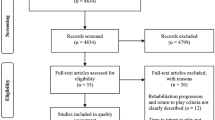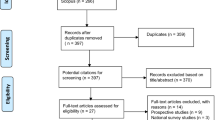Abstract
Objectives: Functional Capacity Evaluation (FCE) is used to determine return-to-work readiness. We investigated the ability of the Isernhagen Work Systems’ FCE to predict sustained return-to-work and future pain and disability in workers’ compensation claimants with chronic back pain. Methods: Prospective study of 130 claimants undergoing FCE for chronic back problems. FCE indicators included number of failed tasks and floor-to-waist lift weight. Recovery indicators included days to suspension of time-loss benefits and future recurrence. Subjects were contacted after one year to determine pain intensity and disability. Analysis included Cox and logistic regression. Results: Fewer failed tasks (HRR 0.94 (0.91–0.98) and higher floor-to-waist lift (HRR 1.38 (1.17–1.62) were associated with faster return-to-work. FCE was not associated with future recurrence, or reported pain intensity, or disability in subjects reached for follow-up. Conclusions: Better FCE performance was mildly associated with indicators of faster return-to-work. However, FCE is not related to recurrent back problems, future pain intensity, or self-reported disability.
Similar content being viewed by others
References
King PM, Tuckwell N, Barrett TE. A critical review of functional capacity evaluations. Phys Ther 1998;78(8): 852–866.
Lechner D, Roth D, Straaton K. Functional capacity evaluation in work disability. Work 1991; 1: 37–47.
Hart DL, Isernhagen SJ, Matheson LN. Guidelines for functional capacity evaluation of people with medical conditions. JOSPT 1993; 18(6): 682–686.
Isernhagen SJ. Functional capacity evaluation: Rationale, procedure, utility of the kinesiophysical approach. J Occup Rehabil 1992; 2(3): 157–168.
Gross DP, Battié MC, Cassidy JD. The prognostic value of functional capacity evaluation in patients with chronic low back pain: Part 1. Timely return to work. Spine 2004; 29(8): 914–919.
Gross DP, Battié MC. The prognostic value of functional capacity evaluation in patients with chronic low back pain: Part 2. Sustained recovery. Spine 2004; 29(8): 920–924.
Amick BC, III, Habeck RV, Hunt A, Fossel AH, Chapin A, Keller RB, et al. Measuring the impact of organizational behaviours on work disability prevention and management. J Occup Rehabil 2000; 10(1): 21–38.
Geisser ME, Robinson ME, Miller QL, Bade SM. Psychosocial factors and functional capacity evaluation among persons with chronic pain. J Occup Rehabil 2003; 13(4): 259–276.
Gibson L, Strong J. Assessment of psychosocial factors in functional capacity evaluation of clients with chronic back pain. Br J Occup Ther 1998; 61(9): 399–404.
Lackner JM, Carosella AM, Feuerstein M. Pain expectancies, pain, and functional self-efficacy expectancies as determinants of disability in patients with chronic low back disorders. J Consult Clin Psychol 1996; 64(1): 212–220.
Lackner JM, Carosella AM. The relative influence of perceived pain control, anxiety, and functional self efficacy on spinal function among patients with chronic low back pain. Spine 1999; 24(21): 2254–2260; discussion 2260–2261.
Krause N, Dasinger LK, Deegan LJ, Brand RJ, Rudolph L. Alternative approaches for measuring duration of work disability after low back injury based on administrative workers’ compensation data. Am J Ind Med 1999; 35(6): 604–618.
Dasinger LK, Krause N, Deegan LJ, Brand RJ, Rudolph L. Duration of work disability after low back injury: A comparison of administrative and self-reported outcomes. Am J Ind Med 1999; 35(6): 619–631.
Altman DG, Lyman GH. Methodological challenges in the evaluation of prognostic factors in breast cancer. Breast Cancer Res Treat 1998; 52(1–3): 289–303.
Gross DP, Battié MC. Reliability of safe maximum lifting determinations of a functional capacity evaluation. Phys Ther 2002; 82(4): 364–371.
Reneman MF, Dijkstra PU, Westmaas M, Goeken LN. Test-retest reliability of lifting and carrying in a 2-day functional capacity evaluation. J Occup Rehabil 2002; 12(4): 269–275.
Brouwer S, Reneman MF, Dijkstra PU, Groothoff JW, Schellekens JMH, Goeken LNH. Test-retest reliability of the Isernhagen Work Systems Functional Capacity Evaluation in patients with chronic low back pain. J Occup Rehabil 2003; 13: 207–218.
Gross DP, Battié MC. The construct validity of a functional capacity evaluation administered within a workers’ compensation environment. J Occup Rehabil 2003; 13: 287–295.
Matheson LN, Isernhagen SJ, Hart DL. Relationships among lifting ability, grip force, and return to work. Phys Ther 2002; 82(3): 249–256.
Rudy TE, Dieber SJ, Boston JR. Functional capacity assessment: Influence of behavioural and environmental factors. J Back Musculoskeletal Rehabil 1996; 6: 277–288.
Feuerstein M, Beattie P. Biobehavioral factors affecting pain and disability in low back pain: Mechanisms and assessment. Phys Ther 1995; 75(4): 267–280.
Gross DP, Battié MC. Factors influencing results of functional capacity evaluations in workers’ compensation claimants with low back pain. Phys Ther 2005; 85(4): 315–322.
Cole DC, Mondloch MV, Hogg-Johnson S. Listening to injured workers: How recovery expectations predict outcomes—a prospective study. CMAJ 2002; 166(6): 749–754.
Cote P, Hogg-Johnson S, Cassidy JD, Carroll L, Frank JW. The association between neck pain intensity, physical functioning, depressive symptomatology and time-to-claim-closure after whiplash. J Clin Epidemiol 2001; 54(3): 275–286.
Roland M, Fairbank J. The Roland-Morris Disability Questionnaire and the Oswestry Disability Questionnaire. Spine 2000; 25(24): 3115–3124.
Tait RC, Chibnall JT, Krause S. The Pain Disability Index: Psychometric properties. Pain 1990; 40(2): 171–182.
Carey TS, Garrett JM, Jackman AM. Beyond the good prognosis. Examination of an inception cohort of patients with chronic low back pain. Spine 2000; 25(1): 115–120.
Kleinbaum DG. Survival analysis: A self-learning text, 1st edn. New York: Springer, 1996.
Hosmer DW, Lemeshow S. Applied survival analysis: Regression modeling of time to event data, 1st edn. New York: Wiley, 1999.
Hosmer DW, Lemeshow S. Applied logistic regression, 2nd edn. New York: Wiley, 2000.
Wasiak R, Pransky GS, Webster BS. Methodological challenges in studying recurrence of low back pain. J Occup Rehabil 2003; 13(1): 21–31.
Pengel LH, Herbert RD, Maher CG, Refshauge KM. Acute low back pain: Systematic review of its prognosis. BMJ 2003; 327(7410): 323.
Andersson GB. Epidemiological features of chronic low-back pain. Lancet 1999; 354(9178): 581–585.
Author information
Authors and Affiliations
Corresponding author
Rights and permissions
About this article
Cite this article
Gross, D.P., Battié, M.C. Functional Capacity Evaluation Performance Does Not Predict Sustained Return to Work in Claimants With Chronic Back Pain. J Occup Rehabil 15, 285–294 (2005). https://doi.org/10.1007/s10926-005-5937-7
Issue Date:
DOI: https://doi.org/10.1007/s10926-005-5937-7




